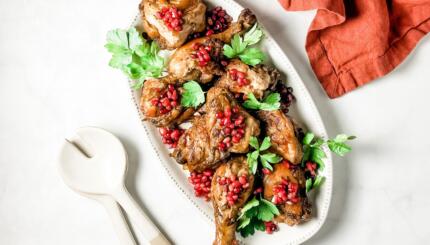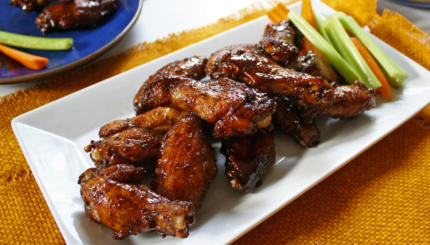Want the secret recipe to the perfect global Jewish cocktails? Read on. After all, the story of Purim is, in part, a story about “passing” — hiding your identity because it is disadvantageous or even deadly to be who you really are. Esther’s dilemma has always struck me on a very personal level; growing up in an upwardly-mobile black family in the American South, my grandmother used to hear stories about cousins, uncles, or aunts who just vanished one day. It was understood that, because of their light skin, they’d simply chosen to “pass” as white for the rest of their lives, assuming a different racial identity because their own felt like a dead end or even a death sentence. Yet they always lived in fear, because they could be suddenly recognized at any time, and the consequences of being found out were catastrophic.
READ: What You Need to Know About the Purim Story
Queen Esther lives in that same kind of fear while Haman rises to power. She’s justifiably afraid to reveal her Jewish identity to Ahasuerus and the world, given that a death sentence is hanging over her entire community; she’s even reluctant when her beloved older cousin Mordechai comes to ask for help. It’s frightening to reveal our true selves when we don’t feel safe to be who we really are.
Purim is also a story about a series of banquets, beginning with Queen Vashti’s downfall. Interestingly, the way Esther chooses to “out” herself to Ahasuerus is to give two such feasts for Haman and the king. Every year, I (somewhat greedily) wonder about the specifics. What was served, besides the likely copious amounts of wine Ahasuerus would have expected? Every move Esther makes, from the moment she decides to help the Jewish people until she and Mordechai are writing their own decrees, is meticulously planned. Surely, the meals would have been, too. I like to imagine that, perhaps, Esther’s first feast was a scrupulously traditional Persian meal, designed to please Ahasuerus while feeling out his attachment to Haman. Then, for the grand finale, Esther’s final banquet with Haman might feature proudly Jewish flavors, helping her to build courage for the dramatic moment where she claimed her heritage and stopped “passing” for good.
If I were assembling the banquet of my life, I’d choose champagne cocktails, because they’re an easy, good-looking drink — just a few ingredients and champagne. In honor of Esther’s victory, I’ve assembled a few ingredients that represent flavors from throughout the Jewish world.
The anatomy of a champagne cocktail is very simple: mix 2-3 oz. of the flavoring of your choice in the bottom of a champagne flute, then top off with cold sparkling wine. Add more flavoring or more wine to taste. It’s not an exact science, and experimenting is part of the fun. (Feel free to try a few yourself before you serve them, to get the hang of it. It’s the cook’s prerogative. Nobody needs to know.) Below, I’ve included some information on a few flavors and how to prep them to get you started.
Sour cherry syrup and other sweet-sour flavors are common in Eastern European cuisine, the flavor profile that many Americans assume means “Jewish food”. In Hungarian Jewish tradition, a creamy sour cherry soup is eaten for Shavuot.
Preparation: Fruit syrups make the simplest cocktails. Put 1-2 oz. of syrup in the bottom of the flute. Top off with 3 oz. champagne.
Variations: Inexpensive fruit syrups, made from real fruit, can be easy to find in some Jewish and Eastern European markets. Other common flavors include black currant, raspberry, and strawberry.
Rose water is a very common flavoring in sweet and savory foods from Sephardic Jewish traditions around the world. It’s also the central flavoring in an Indian dish called Gulab Jamun. Interestingly, homemade rose water used to be a common flavoring in American baking until it was supplanted by more reliable commercial vanilla and lemon extracts.
Preparation: Rose water adds a top layer of scent more than taste, so you’ll want to add a carrying flavor. Try mixing 1 oz. rose water with 1 sugar cube (optional), then adding 1 oz. of Grand Marnier or 2 oz. of citrus juice for a fragrant cocktail. Top off with champagne to taste.
Variations: Rose water is increasingly easy to find in specialty stores. You can also try orange blossom water, which serves a similar purpose in Sephardic cooking.
Pomegranate molasses is commonly used in Turkish and Persian cuisines, among many others. It adds a tart flavor to soups, stews, drinks and desserts. You can actually make pomegranate molasses yourself by slowly cooking pomegranate juice over low heat until it’s syrupy.
Preparation: Pomegranate molasses is very tart. In the bottom of the flute, dissolve 1 T pomegranate molasses in 2-3 oz. of sweetened pomegranate juice. Top off with champagne to taste.
Variations: Try using orange juice, cranberry, or another sweetened juice.
Date syrup (also called date honey) is used in North African and Middle Eastern cuisines. It’s made by reducing the liquid from boiling dates, and frequently used as a sweetener and condiment in sweet and savory dishes. In Iraqi tradition, it’s mixed with chopped walnuts to make haroset for Passover. Traditionally, it’s thought that the “land flowing with milk and honey” mentioned in the Torah was actually flowing with date syrup.
Preparation: Like pomegranate molasses, date honey is thick and sticky, so try mixing 1-2 tablespoons of date honey in 1 oz. of lukewarm water in the bottom of the glass.
Variations: To emphasize the smoky undertones, dissolve the date honey in 1/2-1 oz. bourbon or whisky instead.
Purim
Pronounced: PUR-im, the Feast of Lots, Origin: Hebrew, a joyous holiday that recounts the saving of the Jews from a threatened massacre during the Persian period.
Sephardic
Pronounced: seh-FAR-dik, Origin: Hebrew, describing Jews descending from the Jews of Spain.
Torah
Pronunced: TORE-uh, Origin: Hebrew, the Five Books of Moses.



